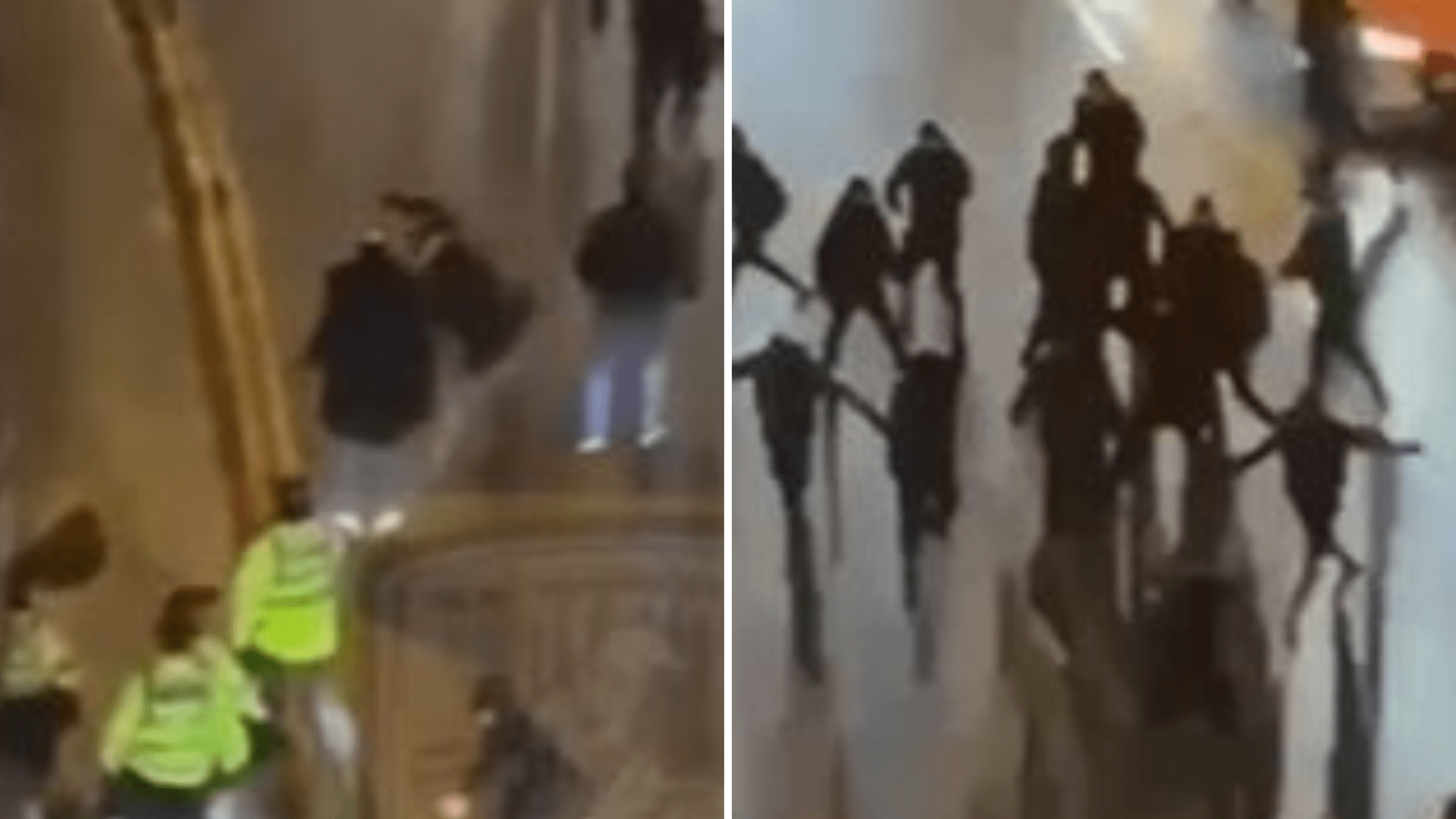The anticipation surrounding the Europa League clash between Manchester United and Rangers, a fixture steeped in historical significance and their first encounter since 2010, was unfortunately marred by pre-match violence between rival fan groups. The fixture, anticipated to be a classic European night at Old Trafford, with both teams positioned competitively in the top eight of the league phase – Rangers in eighth and Manchester United seventh – descended into chaotic scenes on the streets of Manchester. The underlying tension between the two sets of supporters, fueled by the clubs’ shared history and the high stakes of the match, erupted into physical confrontations, overshadowing the sporting event itself.
The clashes, documented in videos widely circulated on social media, depicted a large number of fans engaged in violent exchanges, with a heavy police presence attempting to maintain control. The videos showed scenes of disorder, with bottles and other projectiles being hurled across the street, escalating the already volatile situation. These disturbing incidents unfolded on Great Ancoats Street, approximately four miles from Old Trafford, highlighting the widespread nature of the pre-match unrest. Police intervention resulted in several arrests, underscoring the seriousness of the clashes and the authorities’ efforts to contain the violence.
Adding to the complex circumstances surrounding the match was the looming threat of Storm Eowyn, which led to travel warnings for Rangers fans venturing south. The Met Office had issued red warnings across the UK, predicting winds of up to 100mph, raising concerns about the safety and feasibility of travel. This severe weather warning created an added layer of uncertainty and potential disruption for fans, with public transport services expected to be significantly affected. The combination of fan violence and the impending storm cast a pall over the eagerly anticipated match, diverting attention away from the sporting spectacle.
The violent clashes between Manchester United and Rangers fans prior to their Europa League match serve as a stark reminder of the persistent issue of football hooliganism. Despite efforts to eradicate this blight on the sport, instances of violence continue to erupt, often fueled by historical rivalries, tribalism, and alcohol consumption. The scenes witnessed in Manchester underscore the need for continued vigilance and proactive measures from football clubs, police forces, and governing bodies to prevent and address such behavior. Educating fans about acceptable conduct, implementing stricter security measures, and imposing harsher penalties on offenders are crucial steps towards creating a safer and more inclusive environment for all.
The incident also highlights the impact of social media in amplifying and disseminating such events. The rapid spread of videos depicting the violence online contributed to the widespread awareness and condemnation of the clashes. While social media can serve as a valuable tool for sharing information and raising awareness, it can also exacerbate tensions and potentially incite further violence. Responsible reporting and consumption of social media content are essential in mitigating the negative consequences associated with such incidents.
Looking forward, the ramifications of the pre-match violence are likely to extend beyond the immediate aftermath of the match. Authorities will likely conduct investigations into the incidents, leading to further arrests and potential legal repercussions for those involved. The clubs themselves may face sanctions from UEFA, the governing body of European football, and will need to review their security protocols to prevent similar occurrences in the future. The incident serves as a regrettable chapter in the history of both clubs and underscores the ongoing challenge of ensuring the safety and well-being of fans attending football matches. It also casts a shadow on the otherwise positive atmosphere surrounding a historic European fixture, highlighting the detrimental impact of hooliganism on the sport and its image.











